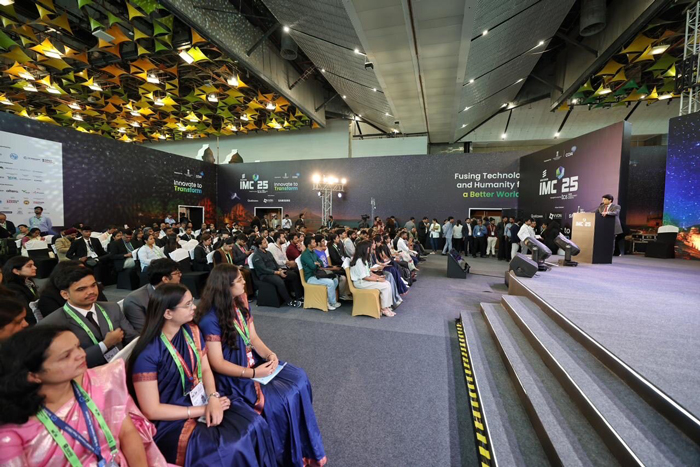The communications minister said that from semiconductor fabs to women-led startups, India’s innovation ecosystem is scaling from Tier 1 metros to Tier 3 towns.
Reiterating a perspective shared on the opening day of the India Mobile Congress (IMC) 2025, Jyotiraditya Scindia, Union Minister for Communications, said India’s evolution from a services-led economy to a global powerhouse for digital innovation, advanced manufacturing and entrepreneurship has been historic.
“India, which could not even imagine manufacturing chips a decade ago, is today building semiconductor fabs from Gujarat to Assam,” Scindia noted during his address at the Nation Builders Summit on Thursday.
He likened the current digital revolution to the transformative impact of roadways and railways during the Industrial Revolution, connecting people, production and opportunity at scale.
Scindia said the country has vertically integrated backwards into high-value manufacturing, from digital services to products, and all the way to semiconductor chips. He credited the vision of Prime Minister Narendra Modi, whose push for Digital India, Startup India and the Semiconductor Mission over the past 11 years laid the foundation for this leap.
India’s rise as the third-largest digital nation globally was also spotlighted, with 1.2 billion mobile subscribers, 974 million Internet users and 944 million broadband connections. With 46 per cent of the world’s digital transactions now routed through the Unified Payments Interface (UPI), amounting to $3 trillion annually, the country has built the largest digital public infrastructure in the world, empowering millions to participate in the digital economy.
Startup Ecosystem Expanding Beyond Metros
Scindia highlighted the explosive growth of India’s startup ecosystem, from a handful of enterprises 15 years ago to over 180,000 startups and more than 100 unicorns today.
“Today, a majority of companies listed on the stock exchange are based out of Tier 2 and Tier 3 cities. Entrepreneurial energy is rising from every small town and district,” he said.
He also spotlighted a powerful shift towards gender equity in entrepreneurship, with over 73,000 women-led startups emerging as strong drivers of growth. “If India must move from Amrit Kaal to Shatabdi Kaal, every citizen—especially women—must be equal participants in building the New India of 2047.”
Drawing on his experiences at Stanford, Scindia invoked the lessons of Andy Grove: “The only constant is change” and “Only the paranoid survive.” He said these principles now define the DNA of Indian entrepreneurship. The government-industry partnership model, he added, has replaced regulation with facilitation.
“Government provides the runway, and entrepreneurs provide the flight.”
Calling this a defining decade for India, Scindia surmised, “This is your time. India will not just be vocal for local but local for global—designing in India, solving in India and scaling for the world.”
The dialogue underscored how government initiatives such as Startup India, Digital India and the Telecom Technology Development Fund (TTDF) have catalysed innovation across agritech, healthtech, deeptech and AI, enabling startups to scale and tackle real-world challenges.


